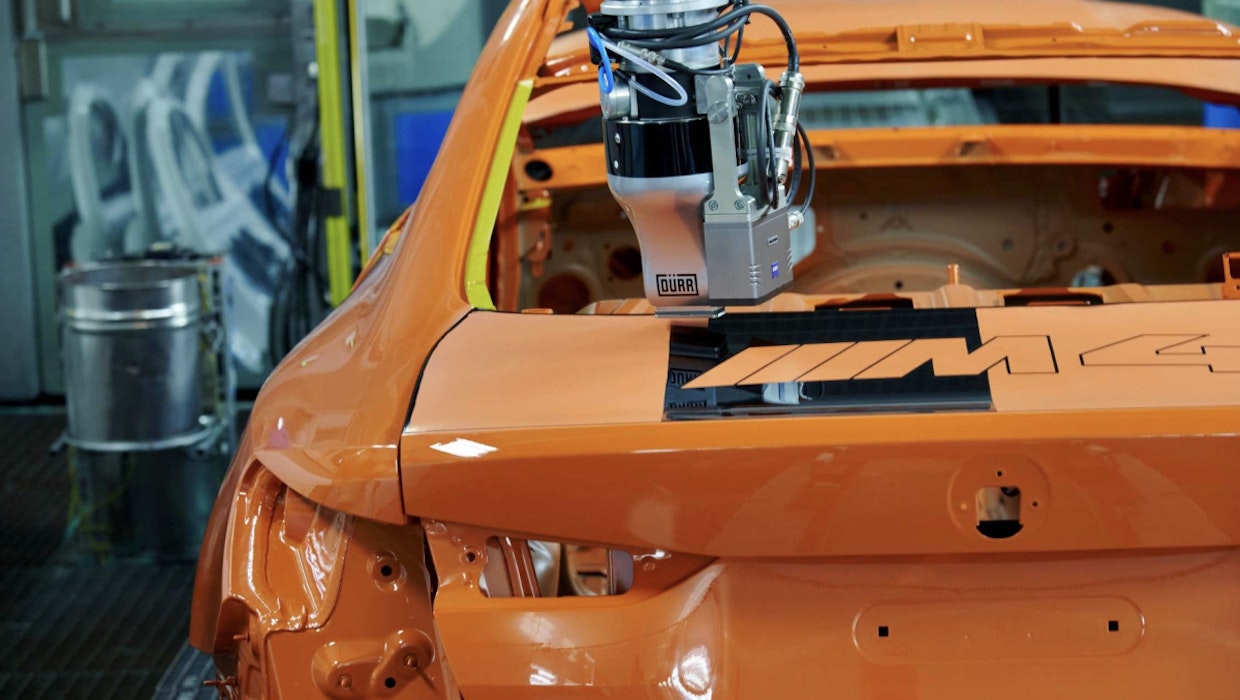
BMW is testing a new painting process , in which robots apply paint to cars with almost no loss. The technology is reminiscent of inkjet printing and saves costs and materials.
Robots paint multicolored and patterns
So far, paint has been atomized in car production with a rotating bell with 35,000 to 55,000 revolutions per minute. With the new process, robots apply the paint via an applicator via a nozzle plate. As a result, the color can be applied with sharp edges, as BMW reports. The variable painting width is between one and about 50 millimeters. The result: This enables two-tone paintwork as well as the application of stripes and patterns.
“In perspective, the new painting process succeeds in every To paint a component on the vehicle exterior and to offer the customer the option of customization almost without restriction, ”says the car manufacturer. The technology is being used for the first time in 19 BMW M4 Coupés at the Dingolfing plant – on a test basis. According to the group, the series use of the piloted painting process is planned from 2022.
Procedure lowers costs and energy consumption
The BMW-M4-Coupés are currently available with an individual bicolour Paintwork and an M4 marking on the bonnet and tailgate. So far, such special productions could only be realized by manual masking, so-called masking. The material and personnel costs required for this are omitted. That means: lower costs. There is also no need to dispose of excess paint particles and energy consumption is reduced.
Overall, the new process should lead to energy savings of more than 6,000 megawatt hours. BMW has reckoned with around 7,000 operating hours. The so-called CO2 footprint should be reduced by almost 2,000 tons per year.